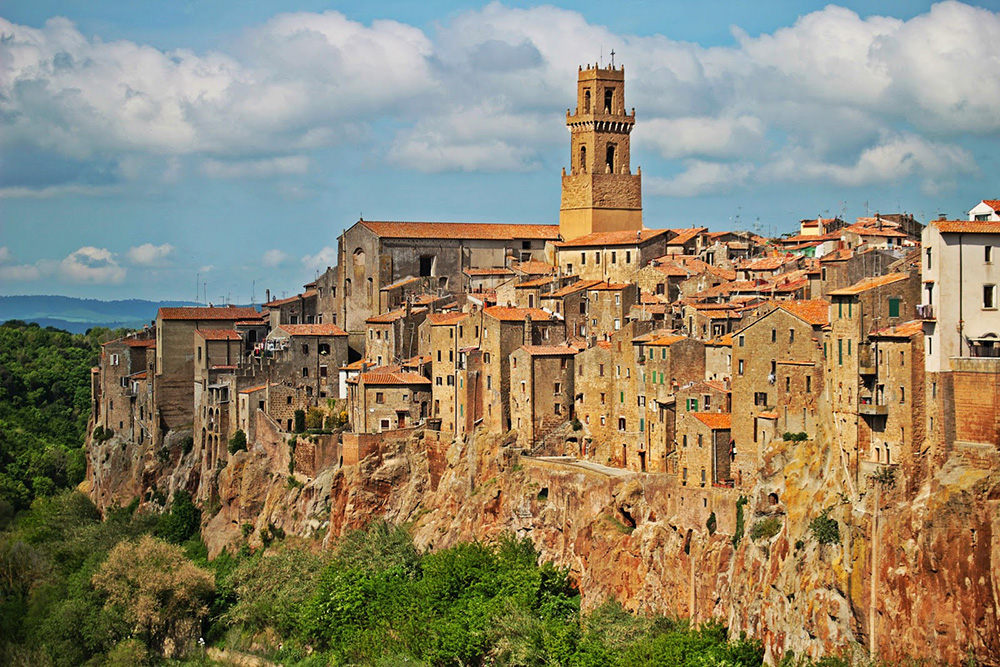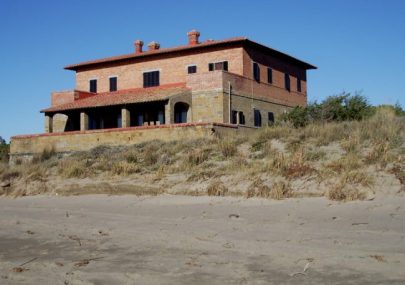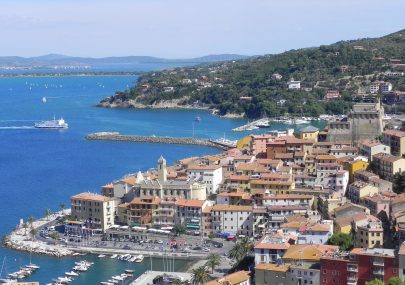
Pitigliano
Pitigliano, a village of Etruscan origin, was built on a tuff hill in which tunnels, tombs, cellars and alleys were dug during the various eras and under the various Roman and Longobard dominations. The tuffaceous rock formations, tourist fortune of Pitigliano, range from simple natural caves to the most ancient houses, as well as an integral part of the most famous Etruscan necropolis and via cave.
The characteristic historical center is known as the little Jerusalem due to the historical presence of a Jewish community which has always been well integrated into the social context and which has its own synagogue here.
Arriving in Pitigliano from the sea, you notice the characteristic houses that protrude from a large tufa spur, absolutely overhanging.
Places to visit in the historic center:
Palazzo Orsini, an imposing fortified palace, the complex houses the diocesan museum of Palazzo Orsini, full of works of art covering a period of time from the Middle Ages to the modern age, and the archaeological civic museum, where various finds are kept from the nearby archaeological areas.
The Orsini park, a hill where some sculptures and the two monumental thrones are preserved, stone seats on the crest of the hill.
Among the most important religious structures of the place there are the Cathedral of Saints Peter and Paul, the cathedral of Pitigliano, built in medieval times, inside there are various works of art ranging mainly between the seventeenth and nineteenth centuries. Among which the two canvases “life of San Gregorio” – Henry IV in Canossa and the predestination of the young Ildebrando – by the Manciano painter Pietro Aldi; The Sanctuary of the Madonna delle Grazie and the Church of San Rocco.
The Jewish cemetery was built during the second half of the sixteenth century as a burial place for the members of the Jewish community of Pitigliano, which has always been quite numerous and well integrated into the social fabric of the town in the Tufo area.
Inside Piazza della Repubblica there is the Fontana delle Sette spouts, a characteristic fountain built in 1545.
The Medici aqueduct is a hydraulic engineering structure designed for the water supply of the village of Pitigliano, it is entirely covered in tuff and fully integrates both with the geological context of the area and with the other architectures of the previous era.
Among the various archaeological sites in the village of Pitigliano we can find Poggio Buco an Etruscan city inhabited since the late Bronze Age (12th century BC). The archaeological sites of Caravone, Insuglietti, Le Sparne, Selva Miccia are part of Poggio Buco.
The Vie Cave, also called Cavoni, constitute a suggestive road network from the Etruscan era that connects various settlements and necropolises in the area between Sovana, Sorano and Pitigliano. Around Pitigliano, various Vie Cave develop, including the one directed towards the archaeological area of Sovana.
In the historic center of Putignano, we can find many cellars dug into the tuff and excellent local food products.
The area in which Pitigliano stands is the production area of the Bianco di Pitigliano wine and the Rosso di Sovana wine, each of which has some variations based on the production regulations.


